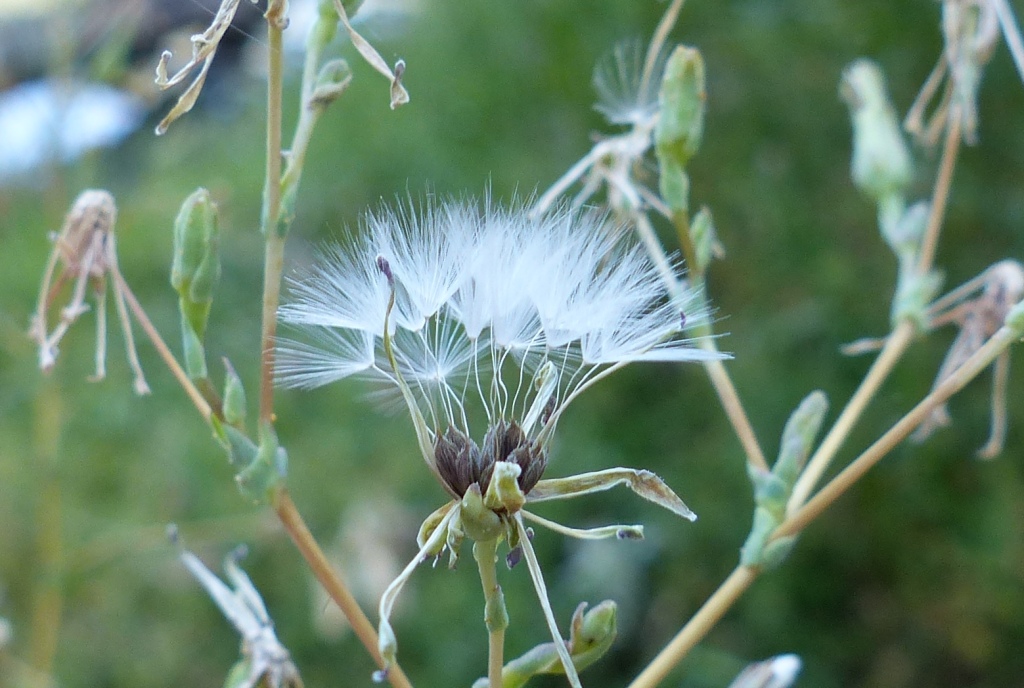Lactuca
Annual, biennial or perennial herbs or subshrubs, rarely (not in Victoria) climbers; stem usually solitary, branched. Leaves basal and cauline, alternate, entire to pinnatisect. Capitula in terminal panicles or spicate in axillary clusters, few–many-flowered, sessile or pedunculate; involucre cylindric, bracts many-seriate, unequal, herbaceous with scarious margins, fringed at apex, free, imbricate, outer ones much smaller than inner; receptacle flat, naked, pitted. Florets ligulate, bisexual, yellow (in Victoria), or whitish to bluish; ligules linear to oblong, minutely 5-toothed; anthers tailed at base, with short subacute apical appendages; style bilobed, with linear, pubescent branches. Cypselas ovoid to obovoid, compressed, with narrow marginal ridges, faces 5–9-ribbed, with a pale filiform beak c. equal to body; pappus of many series of fine, more or less equal barbellate bristles.
About 75 species from Europe, Asia, Africa and North America; 3 species naturalised in Australia.
Lactuca virosa has been recorded around the northern suburbs of Melbourne. These appear to be plants persisting in neglected gardens, but as yet do not appear to be spreading into the wider landscape. This species resembles L. serriola f. integrifolia but is distinguished by the black cypselas and stem leaves that are horizontally orientated.
Jeanes, J.A. (1999). Asteraceae. In: Walsh, N.G.; Entwisle, T.J., Flora of Victoria Vol. 4, Cornaceae to Asteraceae, pp. 652–666. Inkata Press, Melbourne.
 Spinning
Spinning



